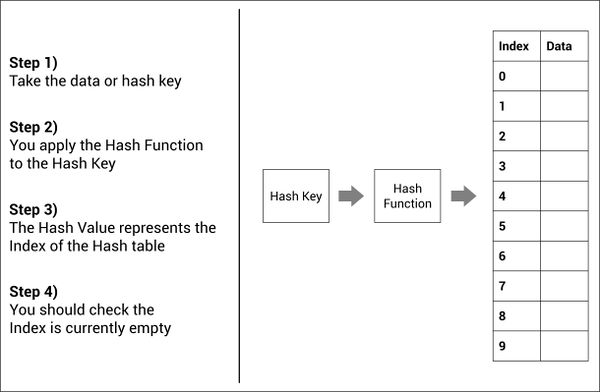Difference between revisions of "Hashing"
(→Hash Value) |
(→Hash Key) |
||
| Line 19: | Line 19: | ||
===Hash Key=== | ===Hash Key=== | ||
| + | The hash key is the specific modifier passed into the hash function in order to generate the returned value. | ||
| + | |||
===Hash Function=== | ===Hash Function=== | ||
Revision as of 20:54, 6 December 2017
Contents
[hide]What is hashing
Hashing is the process of calculating a fixed length value from another value, such as a string. A value is passed into a Hash Function and the function returns a Hash Value. This process is used in cryptography. Rather than storing a 'secret' (such as a password) as plain text, it's hash value is calculated and stored in its place. Therefore, if the storage database was compromised and an attacker could see the stored passwords, they wouldn't know their actual value - only the hash. It is intentionally difficult to reverse the hashing process without the original parameters and function used to create it.
Hashing is also used for storing large quantities of data in a hashing table. The data is converted to an integer hash, which is then used to 'search' the table to fetch the relevant data. This has the advantage that finding an integer from a list of integers is much faster than searching for a string within a list of strings.
Key Terms
Hash Value
The Hash value is the value generated after passing the plain text through a hashing function.
Hash Key
The hash key is the specific modifier passed into the hash function in order to generate the returned value.
Hash Function
Collisions
Collisions occur when two values, when entered into the same hashing function, return the same hash value. These are inevitable when dealing with huge quantities of values no matter how complex the function. The creator can take steps to reduce the number of collisions that will occur but they are impossible to prevent.
Handling Collisions
Rehashing / Closed
Linked List of Collided Values / Open
Example
PHP's crypt() function is a hashing function that supports multiple methods & standards, designed for password cryptography. They use a salt, which is additional data that is added to the value to be hashed in order to make it longer and more complex.
From PHP.net Manual on crypt:
1 echo 'SHA-512: ' . crypt('rasmuslerdorf', '$6$rounds=5000$usesomesillystringforsalt$') . "<br>";
2 Output: SHA-512: $6$rounds=5000$usesomesillystri$D4IrlXatmP7rx3P3InaxBeoomnAihCKRVQP22JZ6EY47Wc6BkroIuUUBOov1i.S5KPgErtP/EN5mcO.ChWQW21
The function hashes 'rasmuslerdorf' (creator of PHP) and outputs it, using the salt '$6$rounds=5000$usesomesillystringforsalt$'.
